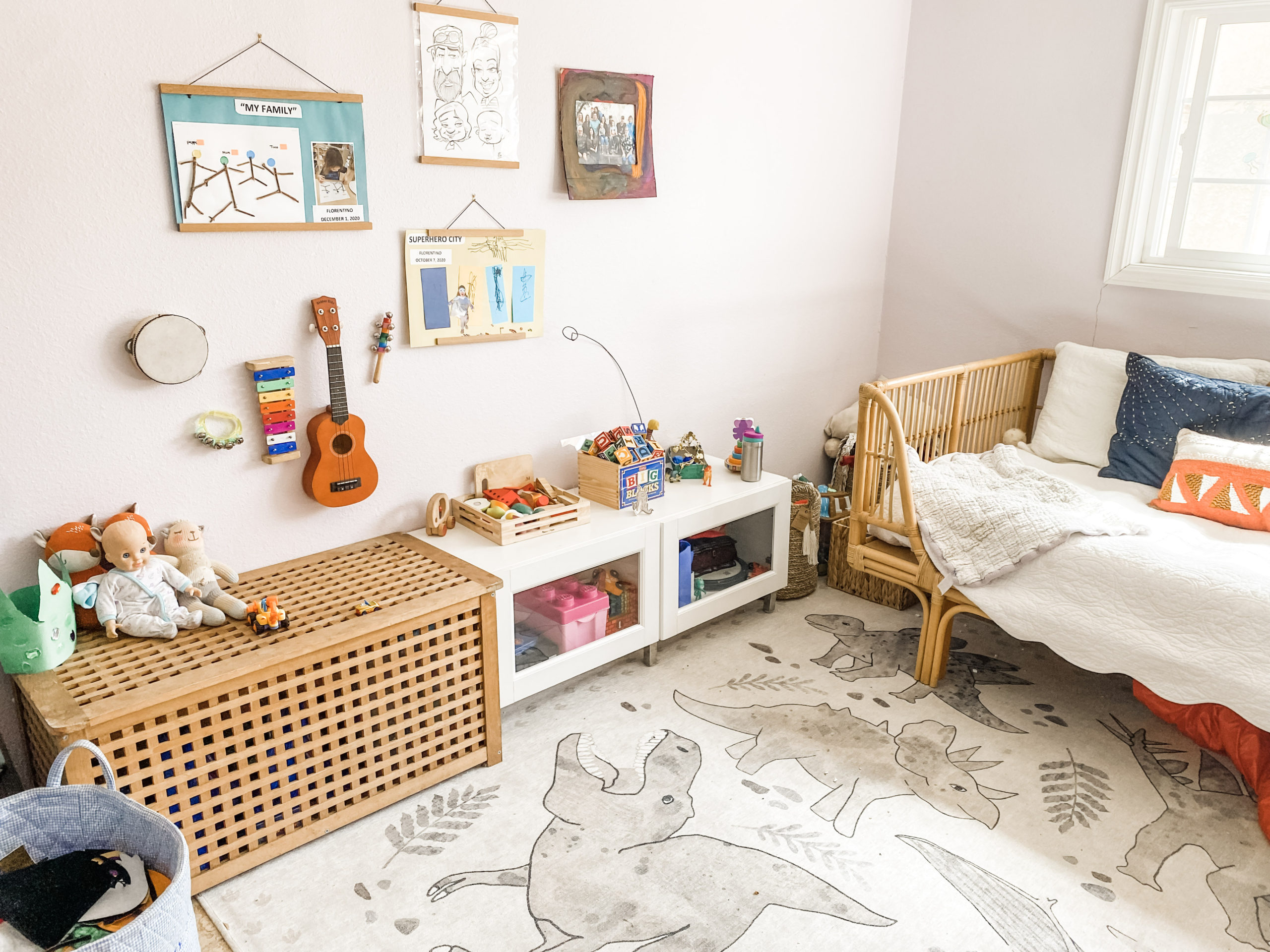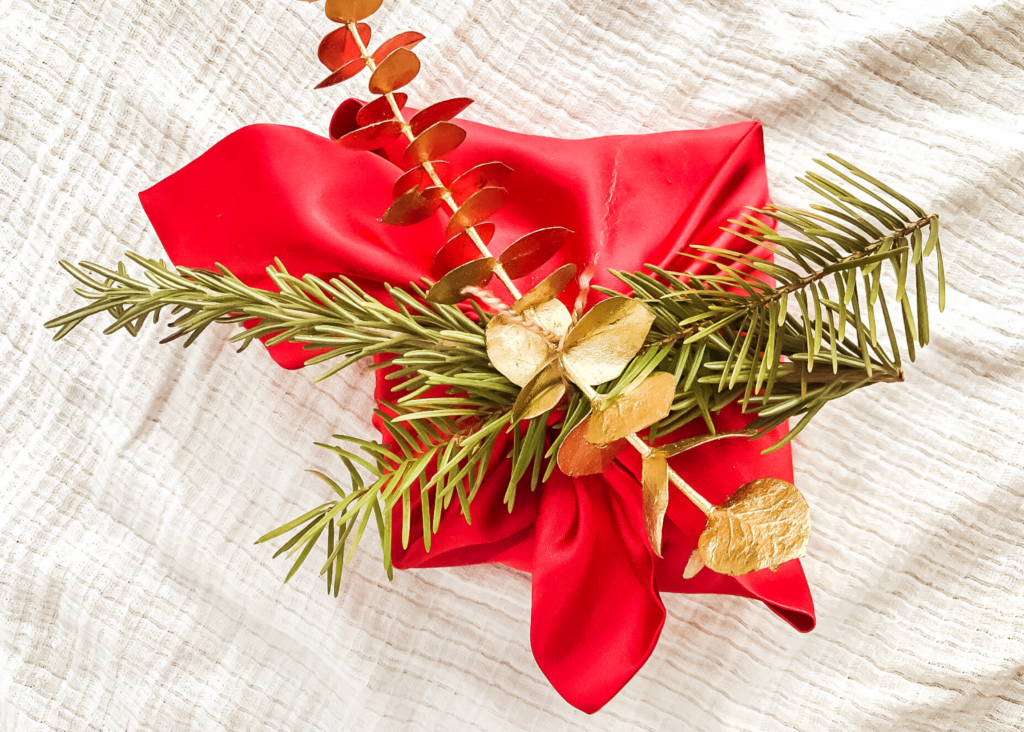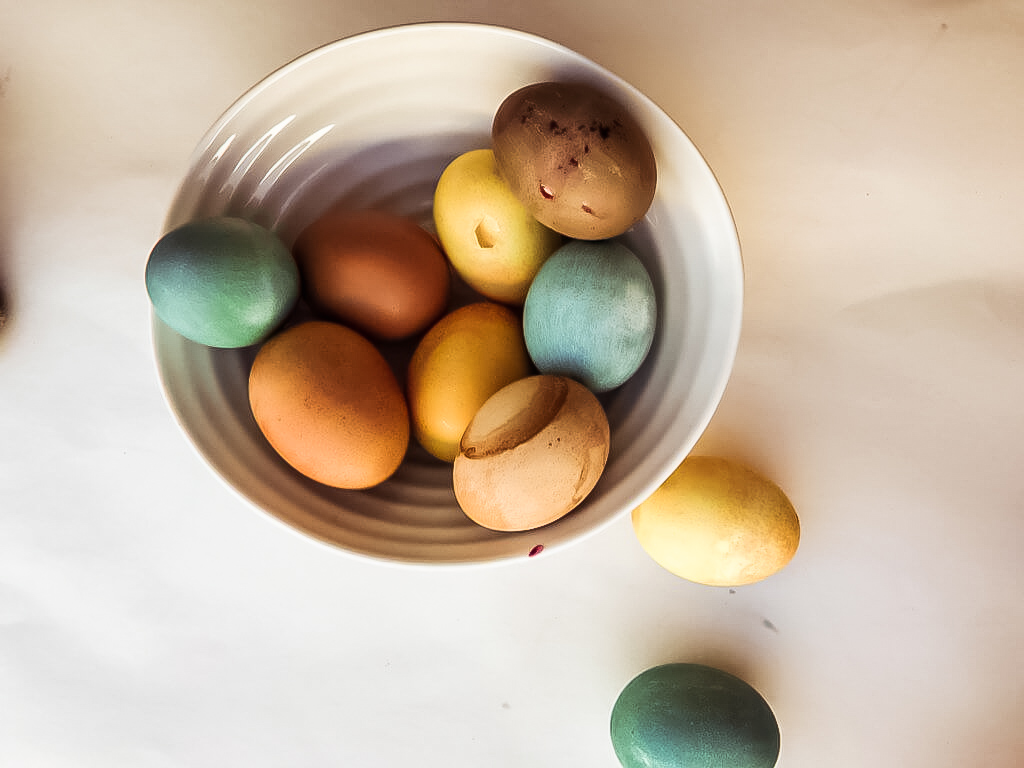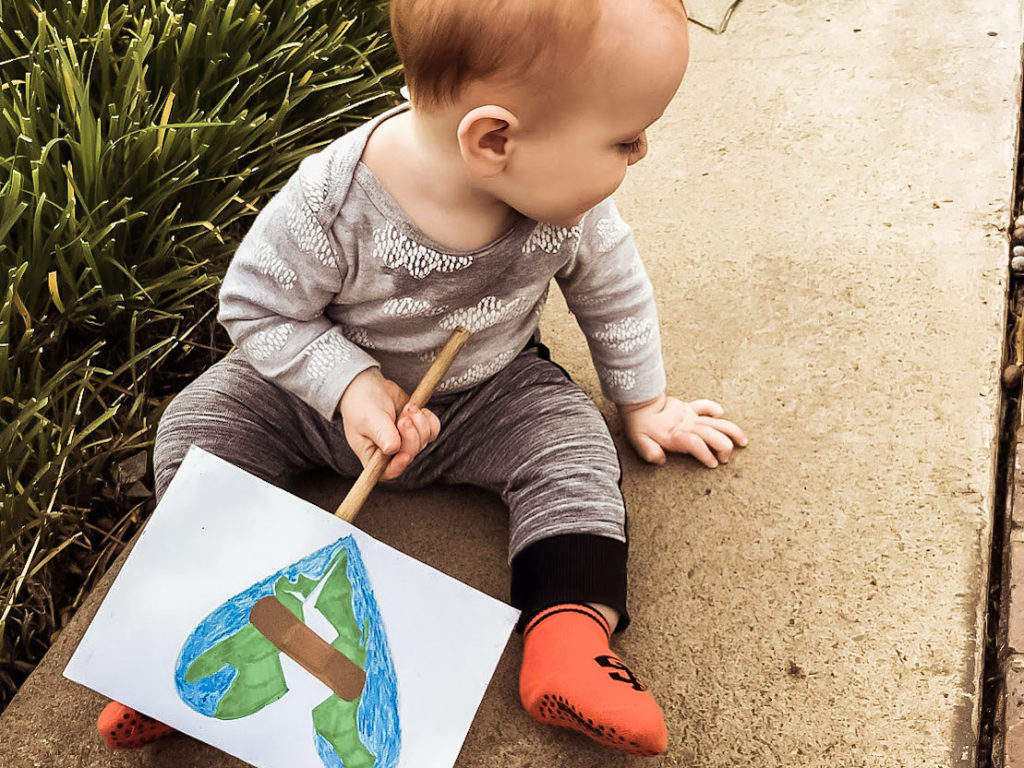How Create a CLUTTER FREE and Eco-Friendly Playroom

A clutter-free and eco-friendly playroom: Simple and sustainable in your playroom, and how it can lead to a slower, more peaceful life.
Ok, before I get started here, I want to make it clear that our playroom is not minimalist. I wish it was. In time, perhaps. But, we are getting there. Also, when I say playroom, I am using the word super loosely. To me, “playroom” is just the room with most of the toys. For us, it is part playroom, part laundry room, part kids’ clothes room, and our guest room.
—
When I was pregnant with our first, I imagined filling our space with beautiful and simple wooden toys. I imagined a quiet space (both visually and audibly) for using our imaginations to create and play. I looked for open-ended toys and simple blocks, books, and animals.
Well…we did NOT have that. Still don’t, really. But we’re a little closer.
Despite the fact that I almost never buy toys for our kids (and when I do, I am thoughtful about which ones we choose and almost always buy them second hand), our playroom was often overrun with talking cars, singing animals, and light up books and “iPads.” Both the number and the volume of the toys were overwhelming.
Ugh.
Even when I’ve asked for a no toy Christmas, we’ve gotten toys. Lots of them. And mostly loud plastic junk. Of course, my kids love them. For a few minutes, at least.
And our playroom (and kids room, family room, closets) had all gotten overrun with toys.
The amount of time they actually play with a toy is short. They get bored in weeks. And then just collects dust.
Sound familiar?
—
For many of us, a neat home is a calm and happy home. It took me way too long to realize the link between internal peace and my external space and even longer (still working…) to put it into action. For us, clutter is a near constant struggle, with my husband a paper pack rat, and me a sentimentalist with an extreme desire to reuse everything.
Now that we have kids, the problem has compounded, as it does for many families.
With kids comes stuff. And with kids comes an even greater need for simplicity.
Our little ones need a calm and peaceful place even more than we do. And, to do anything with little ones, you’ve got to be at least mildly organized or you will lose your mind, right?
Toys often become one of the main sources of clutter, on every surface, waiting to be stepped on in the middle of the night. Played with a few times, and then like their predecessors, they sit and collect dust, all but ignored.
Another birthday or holiday comes around and more, more, more! More active, plastic toys to create clutter (and annoy all of us. But, the fun uncle just wants to give a great gift and that Batman RC car looks pretty awesome, right?)
Can we get it under control? What can we do if our playrooms (and family rooms, kids’ rooms, everywhere) are overrun with toys? The answers: Yes, we can get it under control and we can do quite a bit, but it takes some commitment and time.
A minimalist, eco-friendly playroom is a long-term project to create, and then keep the simplicity, sustainability and sanity in your home.
I know, because not long ago, our playroom was an EXPLOSION.
How to Create a Clutter-Free and Eco-Friendly Playroom
Step One: Realize that less is more.
The first step to creating a clutter-free and eco-friendly playroom is to understand that less is more. Much, much more, in so many ways. You’re here, so I have a feeling that you know this. But knowing it and living it are two different things. I know, because I was (sometimes still am) there.
The Problem with Our Toys
Well, most of them.
Plastic
90% of toys are plastic, making most playrooms the complete opposite of an eco-friendly space. The toy industry uses hard plastic, which is much more difficult to recycle than the softer, single-use plastic that the food industry uses. And for a little perspective: according to a UNEP 2014 study called “Valuing Plastics,” a toy kitchen uses the equivalent of 400 empty plastic water bottles.
The rate at which kids go through toys (and consume plastic) is quick. They outgrow their toys, and most toys are only played with for six months. So, the toys are thrown out, usually to end up incinerated or in a landfill.
Ok, enough data. Plastic is bad, you know it, I know it.
Our Kids Are Watching Our Habits: Conscious Consumerism
Affluent families, like many of ours, are currently over-consuming at such a rate that we are the greatest contributors to the climate crisis. As a community, we are consuming too much and our kids are watching.
I would like our family to work against this alarming statistic. You’re reading this, so I imagine you feel the same.
I’ve spoken before about environmentalism and conscious consumerism and my children. It is one of my core values, and of course something I’d like to pass along to them.
Helping them understand what they need versus what they want (we are of course a long way off), showing them the impact of the smaller plastic toys on our local environment (parts of shovels at the beach, lost and broken toys at the park), and demonstrating that we value fewer, better things and experiences over things are a few ways that I hope to teach them.
A clutter-free, eco-friendly playroom is all part of this.
Basic is Better
When it comes to toys, basic toys are better for our children.
Not only do simpler, basic toys look better (I mean, who doesn’t love the clean white and wood aesthetic?), but they are better for our kids (and are certainly easier on our ears!). Kids are natural problem solvers, creative thinkers, and imagination users. The more a toy does, the less the child does, and that doesn’t allow them to use their abilities or increase their learning.
The simpler the toy, say 90% kid and 10% toy, the better for their development. And for our sanity, playrooms, and the environment.
Fewer is Better
Not only are basic toys better, but fewer of them help our kids actively play longer, better, and deeper. Research shows that small children are often unable to decide what to play with when there are too many options.
When the options are limited, they play more creatively and for a longer stretch of time. They also don’t get bored as quickly and often imagine more sophisticated scenarios and games. Leave your little one alone in a simple playroom for a bit, and you will likely hear her talking to herself and her toys so sweetly. It is one of my favorite things.
Everything is a Toy. No Toys Needed.
Last night, my kiddos and I played “fizzy players tag.” It is a combination of tag, sword fighting, and dance party. I am “it,” and chase them around, and tap their booties with the styrofoam stabilizers that came with our dishwasher. And, wow! These two had fun. We all did.
I have always thought that kids need almost no toys. And, this keeps getting reinforced. A bike, a few blocks, maybe a puzzle. That is about it. My little one is obsessed with our salad spinner. My preschooler loves the swords, boats, and cars I’ve made out of cardboard. Their current favorite game is when I pretend to go to work, and they jump out of the big boxes we get our groceries delivered in and become my adopted kitties.
Kids are incredibly creative when left with fewer options. They will find ways to play with whatever is available, and the simpler it is, the more creative they get.
Step Two: Set Some Boundaries.
With ourselves, our children and our friends and relatives.
This is the hardest part. By far. Especially if you happen to have a difficult time saying no or setting limits, like I do.
Year after year, I request a “no toy” Christmas or birthday but we keep getting toys. But, I keep requesting it. I have learned to get more specific about what I mean.
The over-gifting is so sweet. And it is many of our relatives’ love languages. I love how well my kids are loved. I often have to remind myself of this because I am often overwhelmed when new things come into our house (the third scooter, the second bike, the fifth RC car…)
My mother-in-law (gotta love her!) keeps giving us “educational devices” because “it’s not a toy!”
For us, the best ways to set a few toy boundaries are to:
1. Remind those that are receptive why you don’t want as many toys (the environment, the clutter, your preference for more passive toys). Whatever your reason, letting your loved ones know helps. A bit, at least.
2. Be ready with alternatives or suggestions. After years of still getting toys on our no toy Christmases, I started requesting “no batteries.” And while we got a few toys we most certainly didn’t need, they were a little closer to the mark than past years. My mother has started calling in advance. And instead of ending up with the newest, flashiest, busiest toy, we get something that we will use regularly, like our play table or a play subscription.
3. Ask for experiences. Ask for zoo or museum passes, have them help with a membership or class. Get them in on swim lessons or second language development. Grandparents love this.
I have learned that saying “no toys” makes our relatives feel left out of the joy associated with holidays. And, like our kids, giving actual direction on what we would prefer is more successful. So, we talk about what we would like in advance and tell them exactly, even sending links if necessary. It may seem like it takes some of the fun out of the day, but our kids end up surprised and delighted, and it takes some of the stress out of gift giving for our relatives.
For birthday parties, I just ask for no gifts. Many parents are grateful for one less errand to run, others still get us gifts and that’s ok!
Boundaries for ourselves
Setting boundaries for our kids and ourselves is sometimes even more difficult. You head out to Sprouts and all of a sudden your kids beeline to the toy shelf (yep! Even Sprouts has a toy shelf! Ugh. They know how desperate grocery shopping mamas can get!). They want a treat. I certainly want to give it to them…. You?
So, I set the tone before we get into the store. “We are buying this, this, and this today. And that is it.” Or, “this is a quick errand, we are going to run in and out to get these things.” It is semi-successful. I often also end up buying them a cookie or some other treat, so like I said, semi-successful. I know many people are much better at this than I am. So, well… online shopping and grocery delivery help!
Don’t Be Afraid To Return
Once you’ve received the inevitable gift, receive it with gratitude. Then, decide what to do with it.
Do not be afraid to return it. I had a hard time with this in the early years. After awhile though, keeping the gift was harder than returning it. If returning a gift is not an option, I no longer feel guilty regifting or donating it.
Step Three: Declutter and Rotate
Ok, this is where you really get started.
I am by no means an expert on this (and if you dropped in on my kitchen today, you’d agree), but I do know this: You just have to start. Slow and steady or all in one afternoon, whatever works for you, just start.
I took control of our playroom (also laundry room extension/ guest room/ former dining room/ former office) over the course of a month. And, after I saw how different my preschooler played in it, I wish I would have done it sooner. He also told me that this was now his room, and that his brother needed to leave. I took it as a compliment.
What is a Toy Rotation and How Do I Set One Up?
A toy rotation is simply a system where you have a set amount of toys on display for your kids now, and the rest in a closet somewhere. You rotate them in and out as they get bored.
It is incredible how exciting the “new” old toys are when you rotate them back in. How often and how many toys is up to you. I like to rotate about once a month or so, as this seems to be about when mine start getting bored of the toys. I will rotate more often if they seem to not be interested in what’s out or if we end up spending a lot more time at home than usual. However, I have read about families that rotate their toys weekly. This is too much for me, but do what works for you and your family.
The amount of toys is much clearer. I leave out enough toys to keep it interesting for them, so that both kids have a few options. But, I make sure that every single toy can be put away and mostly out of sight. I also make sure that I can easily pick up the playroom in just a few minutes and that everything has a place so that they can easily help. It ends up being about a third of our toys, about 10 or so different activities, most of them passive, like trains, legos, and animals.
Each time I rotate, I continue to declutter. And, each time our gift giving relatives are over, I show them our storage so that they see how much extra toys we have.
I don’t really do this, but I should. 😉
What Does Toy Rotation Have to Do with An Eco-Friendly Playroom?
Toy rotation is a great way to keep toys fresh. Whenever I bring out the hidden toys, my kids get so excited. They are thrilled. It is really fun to watch.
By keeping them out of sight, these old boring toys become new and exciting again. Which helps us to keep more toys from coming into the house. If they start asking about new toys, I know it is time to give them some “new” toys.
It also reminds us what we have, so we don’t accidentally buy something again and are aware of duplicates when we get gifts so we can return or pass them along.
Lastly, and most importantly, it helps our children appreciate their toys more, which will help teach conscious consumerism to our little ones.
To Declutter Your Playroom:
1. Decide what your child plays with all the time and never gets tired of.
For us, this is Legos and Hot Wheels. I leave all of these out.
2. Start sorting.
Make a few different piles:
Grown out of and in good condition. Pass these along if possible. We don’t know many younger kids, so I sold some on Poshmark, gave some away on OfferUp, and a few are taking up space in a closet (don’t do this. I know, I know….). All of our outgrown books went to the kids’ school.
Grown out of and in bad condition. Try to recycle these. I sent a box of mismatched and broken toys to Terra Cycle. But if you have municipal recycling that will accept toys, this is where to take them.
Age appropriate. These are going to go into your toy rotation. Likely your biggest pile.
Grown out of but keep. I keep one small box of toys that aren’t really age appropriate just in case we have a little one over. I know this isn’t a minimalist mindset, but I like to have something for everyone. Grown out of and in good condition. Pass these along if possible. We don’t know many younger kids, so I sold some on Poshmark, gave some away on OfferUp, and a few are taking up space in a closet (don’t do this. I know, I know….). All of our outgrown books went to the kids’ school.
Extra. I make one extra pile for toys I really don’t like, but my kiddos do. They are usually little things we’ve gotten from goodie bags or toys that make odd sounds that I just can’t deal with regularly. I put them in a “travel box.” If we lose them along the way… well, I am secretly a little grateful. But, my kids are so excited to have them again that it helps with some of the travel boredom. I also keep a few things that are broken but still interesting for sensory play. It sounds like a lot, but this is usually just one tiny box.
Step Four: A Few Actionable Ways to Create an Eco-Friendly Playroom.
Buy secondhand. We LOVE legos. They keep my kids busy for hours. But, there is just so much plastic in every single kit. So, I’ve limited the number of new kits that we buy and instead hunt on Poshmark (or eBay or any other second hand marketplace). I have found Schleich toys, play silks, storage baskets, and shelves for our playroom all secondhand.
Focus on simple, passive toys. There are so many beautiful wooden toys that allow your little ones to
Consider the materials. I mentioned wooden toys, but there are also a few companies that make great recycled plastic toys. I love
Try to take good care of what you have. I know it is so hard when the little hands (and mouths) that are playing with the toys are so rough. But, the better you care for your toys, the more likely they can be given to another child down the road. Not to mention teaching your little ones how to care for them.
Rent your toys. Take a look at toy rental places like Green Pinata and Tiny Earth Toys.
Entertain your kids with alternative toys. Think pots and pans, cardboard boxes and other packaging, instruments, and gardening supplies.
Buy fewer toys. Once you’ve decluttered, do your best to keep it that way. Talk to loved ones about your goals and let them see your beautifully minimal playroom.
Consider the disposal in everything you buy. Find a way to pass your toys along to other kids in your circle before sending to the Goodwill or the landfill. If you don’t have anyone to send them to, consider OfferUp or Facebook Marketplace as an alternative way to gift. There are local “buy nothing” groups on Facebook that are a great place to swap out toys.
Buy sustainable toys. If you need to buy new, try to buy sustainably made toys. If you aren’t sure where to start, take a look at my Big List of Sustainable Toys.
Creating a clutter-free and eco-friendly playroom takes time and dedication, but it is so rewarding. It allows us to live a little more simply, more slowly, and certainly more sustainably. It also allows our little ones a little more peace and creativity.
Did I miss anything? Have you done anything that has created a peaceful, clutter free playroom? I would love to hear it. And, if you are interested in more slow motherhood tips, I invite you to join my 5-day Slow Motherhood Challenge.




